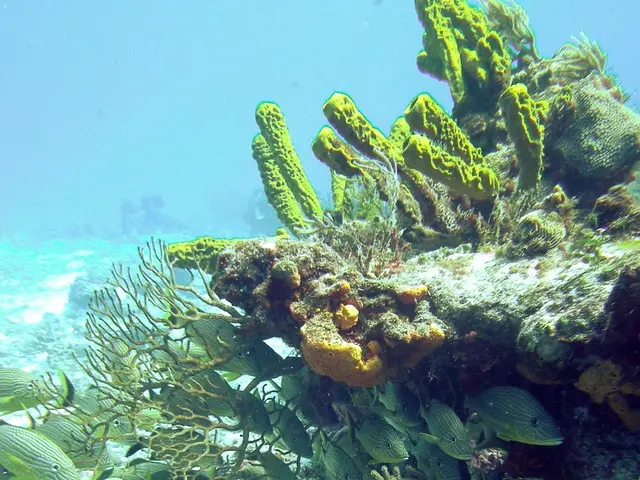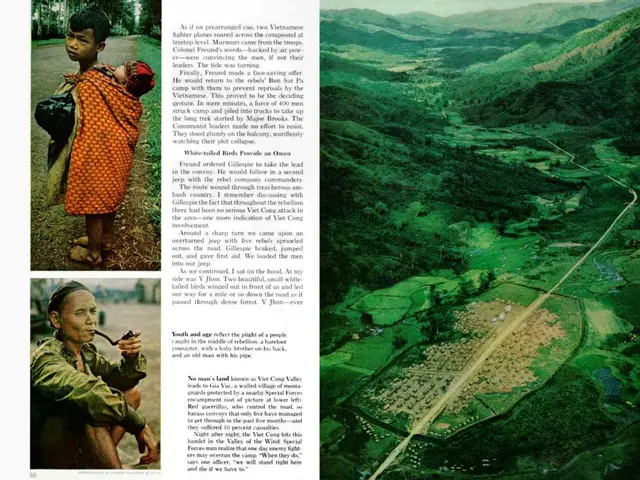Climate Modeling Progress: Course Charted for Long-Term Species Endurance in the Aftermath
In a quest to ensure the permanence of humanity across millennia, comprehending and predicting the Earth's ever-evolving climate is paramount. The long-term survival of species relies not only on addressing immediate environmental challenges but also preparing for unexpected shifts that unfold over centuries and beyond. Advanced climate modeling stands at the forefront of this endeavor, offering a powerful tool to forecast long-term climate trends and identify potential tipping points that could reshape ecosystems and threaten life on Earth.
The Urgent Need for Sophisticated Climate Models
While traditional climate models have made remarkable strides in forecasting weather and medium-term climate trends, the intricacies of Earth's systems—entangled with solar cycles, geological activity, and cosmic influences—demand models capable of simulating dynamics across thousands or even millions of years.
These advancements seek to:
- Integrate planetary and solar system dynamics: By accounting for variations in Earth's orbit, solar radiation fluctuations, and cosmic events that influence climate over geological timescales, models anticipate climate shifts beyond our immediate horizon.
- Simulate feedback loops and tipping points: These models identify crucial thresholds, such as ice sheet collapse or ocean circulation changes, that could trigger rapid, irreversible climate changes.
- Incorporate biological adaptation: By modeling how species and ecosystems might respond, migrate, or evolve under prolonged environmental stress, we can better understand their resilience.
- Predict cascading effects: Comprehending how climate changes affect resources, habitats, and human societies interconnectedly helps us prepare for potential consequences.
Overcoming Challenges in Long-Term Climate Prediction
1. Unpredictable Environmental Changes: Earth's climate is influenced by countless variables, some chaotic or poorly understood. Advanced models employ machine learning and vast datasets—from ice cores to satellite observations—to increase accuracy and reduce uncertainty.
2. Limited Understanding of Adaptive Capacities: Simulating biological responses requires collaboration between climatologists, ecologists, geneticists, and social scientists. Models are evolving to reflect not just physical climate but the resilience and adaptability of life itself.
3. Technological and Resource Constraints: Long-term, high-resolution modeling demands extensive computational power and data storage. Advances in quantum computing, cloud infrastructure, and international data-sharing initiatives are critical to overcoming these barriers.
The Role of Advanced Modeling in Species Survival Strategies
By predicting future climate scenarios, advanced models play a pivotal role in guiding conservation and adaptation efforts:
- Designing resilient ecosystems: Identifying regions likely to remain stable or become refuges helps prioritize habitat protection and restoration.
- Informing genetic conservation: By predicting environmental pressures, we can optimize breeding programs and preserve genetic diversity.
- Supporting sustainable resource management: Anticipating water availability, agricultural viability, and disaster risks enables us to safeguard human and ecological communities.
- Shaping policy and international cooperation: Providing scientific foundations for global agreements addressing climate change and biodiversity loss is essential in the fight for a resilient future.
A Cosmic Perspective on Climate Dynamics
Understanding solar system dynamics, such as variations in solar output or asteroid impacts, adds a cosmic dimension to climate modeling. This broader perspective prepares us for rare but catastrophic events that could disrupt planetary environments and species survival.
Conclusion
Advanced climate modeling is more than a scientific ambition; it is an indispensable tool for long-term species survival. As we unravel the intricate tapestry of Earth's climate, these models equip us to anticipate, adapt, and act with foresight. In a universe marked by uncertainty, knowledge becomes our strongest defense, guiding us toward a resilient future for all species on our fragile blue planet.
- Advanced climate models, incorporating planetary and solar system dynamics, anticipate climate shifts beyond our immediate horizon, ensuring a cosmic perspective for species survival.
- Models simulating feedback loops and tipping points, such as ice sheet collapse or ocean circulation changes, inform us about potential irreversible climate changes that may reshape ecosystems and threatening life on Earth, enhancing our preparedness for the long-term survival of species.
- Incorporating biological adaptation into models improves our understanding of species' resilience, enabling us to predict how they might respond, migrate, or evolve under prolonged environmental stress, thereby contributing to health-and-wellness and workplace-wellness in the long term.








